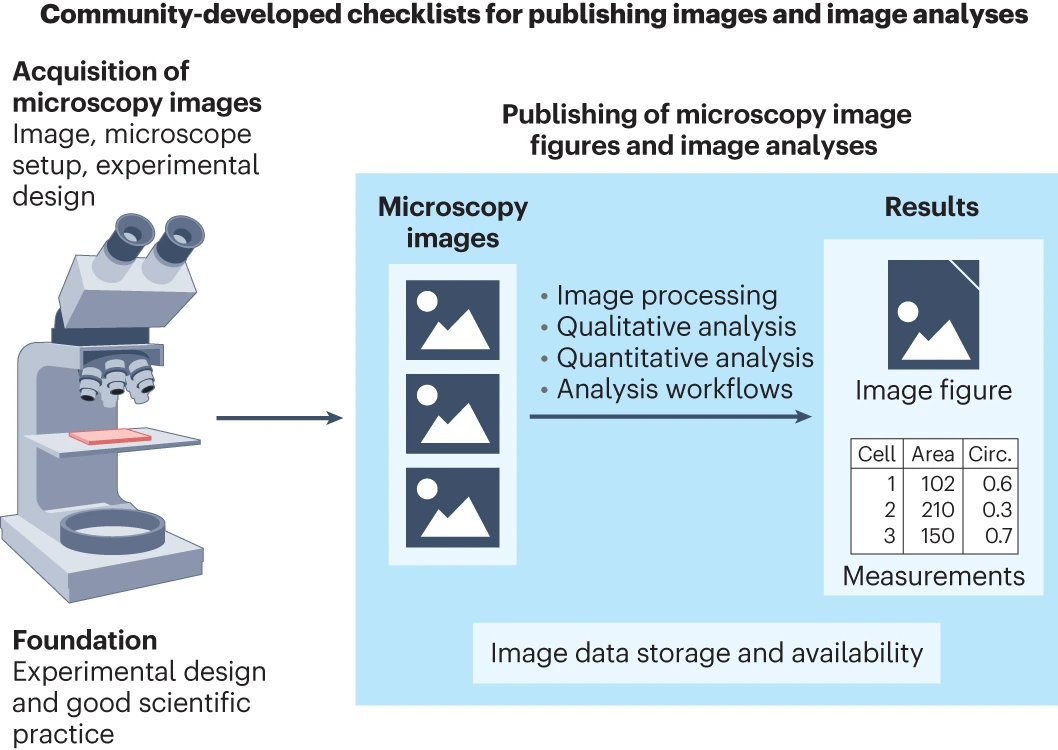Checklists for preparation and analysis of microscopy images

An international group of light microscopists provides guidelines on how to process raw microscopy images and assemble them for publication in a standardised and reproducible manner.
Images are an integral part of science communication. Bright colours, formatting, and graphical elements can captivate viewers faster and more easily than plain text. Microscopy images are nowadays widely used in biomedical publications. These images are more than pictures as they contain information (also known as metadata) that can be extracted, quantified, and reused. It is therefore essential that microscopy images be processed and presented in a clear and standardised manner to be fully informative and accessible to the scientific community thereby enhancing the reproducibility of the results.
This is one of the goals of an international group of light microscopists that has launched the Quality Assessment and Reproducibility for Instruments & Images in Light Microscopy (QUAREP-LiMi) initiative, including Christopher Schmied, the lead author and a former member in Florian Jug’s team at the Human Technopole Computational Biology Research Centre.
The QUAREP-LiMi provided guidelines in the form of checklists to increase the clarity and quality of microscopy image presentation and workflow analysis. These checklists have now been published in Nature Methods.
According to QUAREP-LiMi, insightful microscopy images in a publication should always be accompanied by experimental metadata and a clear description of image analysis workflows, which should be made available to the research community via image and code repositories in accordance with FAIR (Findable, Accessible, Interoperable, Reusable) principles. Additionally, microscopy images should be readable by colour-blind persons, representative, and reproducible.
The checklists for the publication and analysis of microscopy images fulfil these requirements and the need to promote open and reproducible research. The QUAREP-LiMi defines i) a “minimal” reporting level, which includes necessary and non-negotiable information for image publication; ii) a “recommended” reporting level ensuring full understanding of the images and facilitating evaluation of image analysis by the readers; and iii) an “ideal” reporting level that provides all information.
Although designed for microscopy images, these checklists may easily be adapted for other types of scientific images, such as photographs and medical images.
In addition, such guidelines will be useful for publishers, staff in core facilities, and trainers to set gold standards for good research practice.




